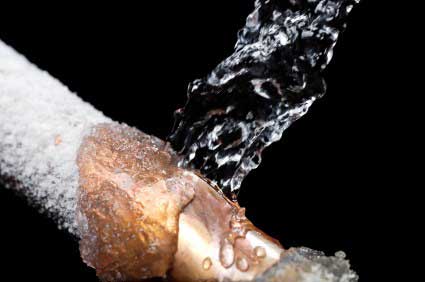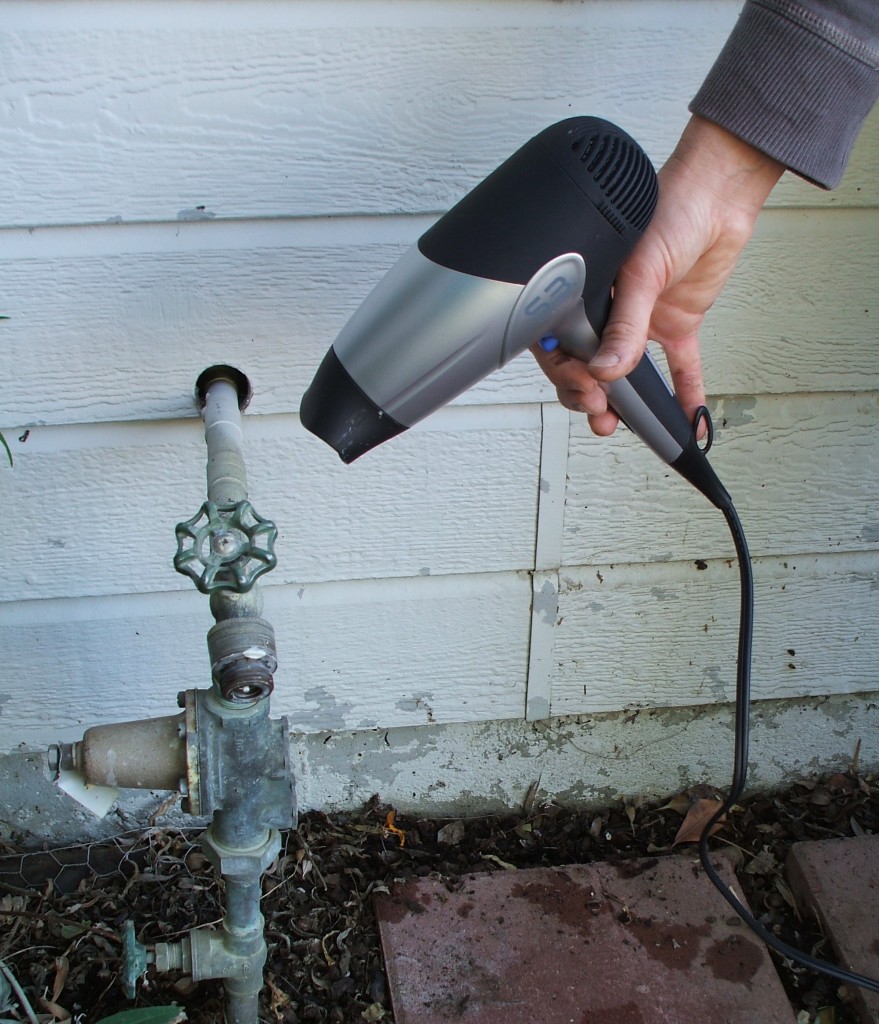Frozen Pipes

Macomb County plumbers
August 30, 2015Frozen Pipes

How To Avoid Frozen Pipes In Your Home
Frozen Pipes: Nothing worse than returning home from a vacation to water, water everywhere. Frozen and broken pipes can be a seriously unpleasant situation. Not only is there the repair of the pipes but usually there’s a mess of water to clean up. Besides, what about the damage caused by the water?
When water freezes, it expands. That’s why a can of soda explodes if it’s put into a freezer to chill quickly and forgotten. When water freezes in a pipe, it expands the same way. If it expands enough, the pipe bursts, water escapes and serious damage results. Ice forming in a pipe does not typically cause a break where the ice blockage occurs. It’s this increase in water pressure that leads to pipe failure. Usually the pipe bursts where little or no ice has formed. Water has to freeze for ice blockages to occur.
Pipes that are adequately protected along their entire length by placement within the building’s insulation, insulation on the pipe itself, or heating, are safe. Pipes in attics, crawl spaces and outside walls are all vulnerable to freezing, especially if there are cracks or openings that allow cold, outside air to flow across the pipes. The cooling effect of air and wind can play a major role in accelerating ice blockage, and thus bursting, in water pipes.
Holes in an outside wall where television, cable or telephone lines enter can provide access for cold air to reach pipes. The size of pipes and their composition (e.g., copper or PVC) have some bearing on how fast ice forms, but they are relatively minor factors in pipe bursting compared with the absence of heat, pipe insulation and exposure to a flow of subfreezing air. Here are a few tips to minimize the possibility of frozen pipes and the unfortunate damage it causes:
If you’re planning on going out of town: don’t turn the heat off during the cold winter months.
Drain the water system. This is the best safeguard. With no water in the pipes, there is no freezing. You can do this even when not leaving but is concerned about a serious overnight freeze. To drain the system, shut off the main valve and turn on every water fixture (both hot and cold lines) until water stops running. When returning to the house, turn on the main valve and let each fixture run until the pipes are full again.
In existing houses, a plumber may be able to re route at-risk pipes to protected areas, although this may not be a practical solution. If the latter is the case, vulnerable pipes that are accessible should be fitted with insulation sleeves or wrapping (which slows the heat transfer), the more insulation the better.
It is important not to leave gaps that expose the pipe to cold air. Plumbing supply stores and insulation dealers carry pipe sleeves that feature extra-thick insulation. The added protection is worth the extra cost.

Use a hair blower when thawing pipes
Cracks and holes in outside walls and foundations near water pipes should be sealed with caulking to keep cold wind away from the pipes. Kitchen and bathroom cabinets can keep warm inside air from reaching pipes under sinks and in adjacent outside walls. It’s a good idea to keep cabinet doors open during cold spells to let the warm air circulate around the pipes. Electric heating tapes and cables are available to run along pipes to keep the water from freezing. (use with extreme caution)
Let the Water Run – Letting a faucet drip during extreme cold weather can prevent a pipe from bursting. It’s not that a small flow of water prevents freezing; this helps, but water can freeze even with a slow flow. Opening a faucet will provide relief from the excessive pressure that builds between the faucet and the ice blockage when freezing occurs. If there is no excessive water pressure, there is no burst pipe, even if the water inside the pipe freezes.
Pipes vulnerable to freezing (ones that run through an unheated or unprotected space) should be left with the water flowing. To save money, the drip can be very slight. Where both hot and cold lines serve a spigot, make sure each one contributes to the drip, since both are subjected to freezing. If the dripping stops, leave the faucet(s) open, since a pipe may have frozen and will still need pressure relief.
Use a hair blower. When thawing pipes, remember slower is better. Pipes that are warmed too fast may break. A hair dryer is appropriate. A blow torch or open flame is not.


